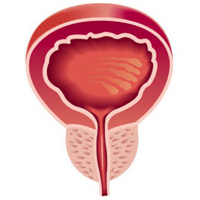Is there a PSA cut-off value indicating incidental prostate cancer in patients undergoing surgery for benign prostatic hyperplasia?

Accepted: December 1, 2020
All claims expressed in this article are solely those of the authors and do not necessarily represent those of their affiliated organizations, or those of the publisher, the editors and the reviewers. Any product that may be evaluated in this article or claim that may be made by its manufacturer is not guaranteed or endorsed by the publisher.
Authors
Aim: To investigate incidental prostate cancer (IPCa) rate and to determine prostate specific antigen (PSA) cut-off value indicating PCa in patients who underwent surgery by being diagnosed with benign prostatic hyperplasia (BPH) clinically or by standard prostate biopsy.
Methods: Data of 317 patients, who underwent transurethral resection of the prostate (TURP) or open prostatectomy (OP) with pre-diagnosis of BPH, were evaluated retrospectively. The examined parameters included patients’ demographics, preoperative serum PSA values, digital rectal examination (DRE) findings, surgical method, histopathological findings and Gleason Scores.
Results: A total of 317 patients were included the study. The median age of patients was 69 years (min: 51-max: 79) and the median PSA value was 3.24 ng/dl (min: 0.17-max: 34.9). In 21 patients (6.6%); DRE findings were in favor of malignancy, but prostate biopsy resulted as BPH. While 281 (88.6%) of the patients underwent TURP, 36 (11.4%) underwent open prostatectomy. PCa was detected in 21 (6.6%) patients. PSA was statistically higher in patients who underwent OP compared to patient who underwent TUR-P, 5.9 (min: 1.2 - max: 27.6, IR: 8.7) vs. 2.8 (min: 0.1-max: 34.9, IR: 4.2) ng/dl, p < .001. The rate of IPCa among four PSA group was similar (p = 0.46). There was no difference between the rate of IPCa in patients younger and older than 70 years, (p = 0.11). Please change whole sentence as 'The median PSA level was slightly higher in patients diagnosed with BPH compared to patients diagnosed with IPCa, 3.2 (min: 0.1-max: 34.9) vs. 2.7 (min: 0.3-max: 26.5) ng/dL, p = 0.9.
Conclusions: IPCa still remains an important clinical problem. We were not able to find any correlation of PSA and age with incidental PCa.
How to Cite
PAGEPress has chosen to apply the Creative Commons Attribution NonCommercial 4.0 International License (CC BY-NC 4.0) to all manuscripts to be published.

 https://doi.org/10.4081/aiua.2021.1.31
https://doi.org/10.4081/aiua.2021.1.31



